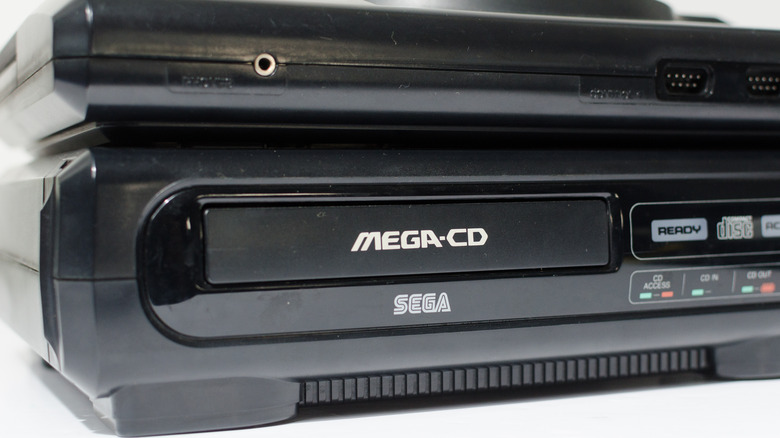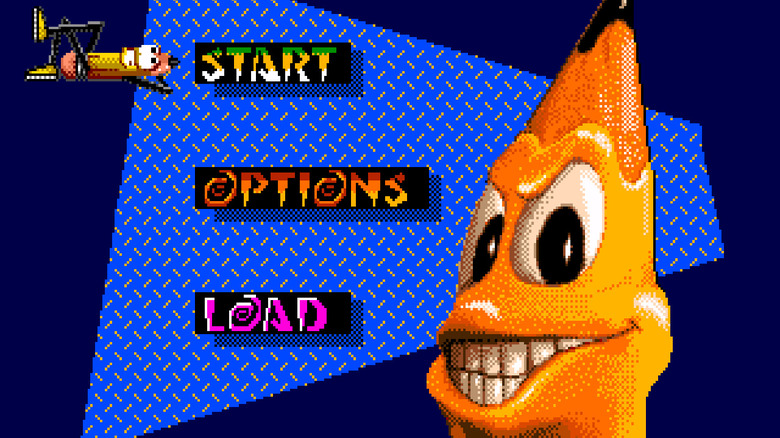When The Sega CD Died, It Took Wild Woody With It
Sega was never the same after the Sega Genesis. Sure, the Genesis was a successful fourth-generation console, but the 90s weren't too kind to Sega. The follow-ups to the Genesis, the Sega Saturn, and Sega Dreamcast were nowhere near as profitable, although some would argue that Sega was ahead of its time with the Dreamcast.
Of course, before its failed fifth and sixth generation consoles, Sega did its best to compete with Nintendo and the rising star of Sony's PlayStation by releasing accessories for the Sega Genesis known as the Sega CD and the Sega 32X. The latter of which, released in 1994, was a complete disaster. The Sega CD (known as the Mega-CD outside of North America) didn't sell gangbusters either, with only six million units sold, according to GamePro. This was partly due to the peripheral's incredibly sparse offering of games on top of its late release in the 16-bit era. So, as the Sega CD died, it took its small collection of proprietary titles with it. Including, of course, the bizarre and obscure "Wild Woody."
Wild Woody appeared shortly before the Sega CD died
Released in September of 1995, "Wild Woody" was a 2D 16-bit platformer that, yes, saw players assume the role of an anthropomorphized pencil named Woody — WILD WOODY. Within the game's opening cutscene, players see an Indiana Jones-esque explorer return from an adventure only to be immediately called out again. However, the ancient totem on their desk splits into several pieces that hop into alternate dimensions. The base of the totem, eager to get his buddies back and prevent the destruction of the universe, zaps a pencil to life and Wild Woody is born.
Players must hunt down each totem piece and bring them back by jumping over obstacles and erasing foes with Wild Woody's posterior. As Hardcore Gaming 101 points out, it's worth noting that while the gameplay for the title was shown in 16-bit pixels, the game's cutscenes were 3D-rendered and even used some primitive motion capture work for some of Woody's movements. Of course, the cutscenes in "Wild Woody" were incredibly rough.
Despite the best efforts of the game's development team, the title was an unsuccessful closing number for the poorly-sold Sega CD. Discontinued only four months after the release of "Wild Woody," neither the Sega CD nor its unique pencil protagonist found much success. Wild Woody was never seen again because, as Woody himself says at the end of his game, he'd be back to save the world, "Only if we sell a zillion units!"


